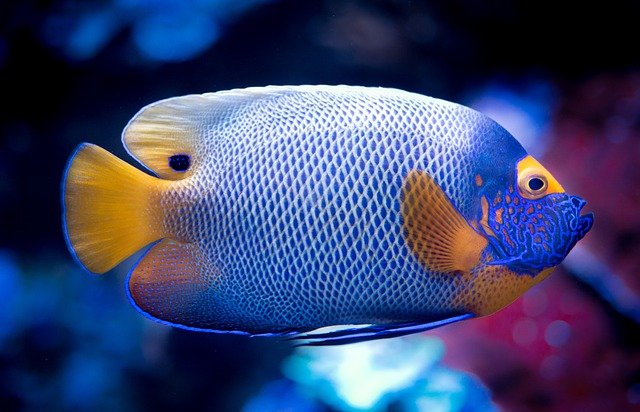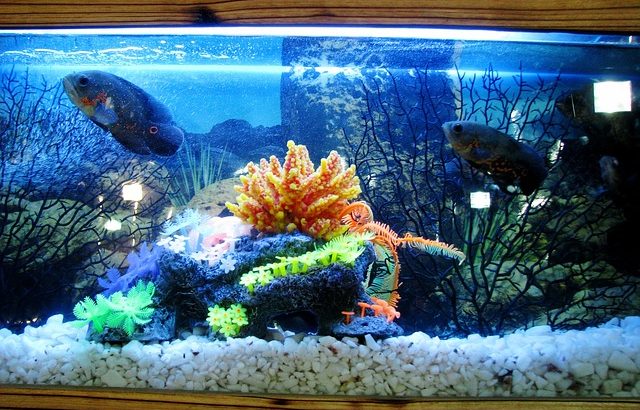Aquatic Veterinary Medicine: An Untapped Market That’s Poised to Grow
Veterinary medicine isn’t restricted to companion animals. While most licensed veterinarians focus on dogs, cats and other common household pets, there are other veterinarians who specialize in aquatic animals. Known as aquatic veterinarians, they aren’t as common as companion animal veterinarians. Nonetheless, they offer an essential service while filling a largely untapped market.
What Is Aquatic Veterinary Medicine?
Aquatic veterinary medicine is the branch of veterinary medicine that focuses on aquatic animals. Like all branches of veterinary medicine, it revolves around the diagnosis, treatment and prevention of diseases and injuries in animals. Aquatic veterinary medicine simply focuses on aquatic animals. There are aquatic veterinarians who diagnose, treat and prevent adverse medical conditions in aquatic animals.
Aquatic animals aren’t immune to diseases and injuries. Like their land-dwelling counterparts, they can become sick and injured. That’s where aquatic veterinary medicine comes into play. It’s the branch of veterinary medicine that focuses on aquatic animals.
Duties and Responsibilities of Aquatic Veterinarians
What do aquatic veterinarians do exactly? They are responsible for providing medical services to aquatic animals. Not surprisingly, fish are one of the most common types of animals serviced by aquatic veterinarians. If an owner believes his or her fish is sick or injured, the owner may contact an aquatic veterinarian for assistance. Aquatic veterinarians know how to diagnose diseases in fish, and they know how to treat those diseases.
Fish can develop a wide variety of diseases, some of which include the following:
- Gill mites
- Bacterial infections
- Fungal infections
- Fin rot
- Ammonia poisoning
- Nitrite poisoning
- Blue sac disease
- Gas bubble disease
- Kidney disease
- Cancerous tumors
- Wasting disease
When most people hear the word “aquatic animals,” they envision fish. Fish are certainly considered aquatic animals, but there are countless other animals that live in water. Marine mammals, for example, are considered aquatic animals. Fish aren’t considered mammals, nor are they are considered amphibians. They are an entirely different taxonomy. Marine mammals, in comparison, are characterized by their ability to breathe air via a respiratory system and their warm-blooded nature. Examples of marine mammals include seals, porpoises, sea otters, sea lions and walruses.
Exploring the Demand for Aquatic Veterinarians
There’s a strong demand for aquatic veterinarians. According to a study conducted by the American Pet Products Association (APPA), over 11 million households in the United States own one or more freshwater fish and 1.6 million households in the United States own one or more saltwater fish. Based on these numbers, freshwater fish are the fifth most common type of pet, whereas saltwater fish are the sixth most common type of pet.
Unfortunately, owners often struggle to find an aquatic veterinarian near their homes. Companion animal veterinarians are located just about everywhere. Regardless of where an owner lives, there’s probably at least one companion animal veterinarian near his or her home. Because they specialize in aquatic animals, however, aquatic veterinarians are less common. Owners may have to drive across state lines to find an aquatic veterinarian.

How to Become an Aquatic Veterinarian
To become an aquatic veterinarian, you’ll need to complete a Doctorate of Veterinary Medicine (DVM) program. Aquatic veterinarians are still considered licensed veterinarians, so they share many of the same requirements. One of the most important requirements to become an aquatic veterinarian is the completion of a DVM program. It’s a formal education program that covers all aspects of veterinary medicine. To practice as a licensed veterinarian — or to practice as an aquatic veterinarian, who also hold a license — you must complete a DVM program.
Completing a DVM program, of course, isn’t easy. While different schools have different DVM programs, most of them last four years. And before you can enroll in a school’s DVM program, you must meet the school’s prerequisites for that program. Most schools require students to complete a bachelor’s degree program before they can enroll in a DVM program. Only after meeting the school’s prerequisites can you enroll in its DVM program.
You may want to seek certification in aquatic veterinary medicine as well. The World Aquatic Veterinary Medical Association (WAVMA) offers a certification program for aquatic veterinary medicine. It’s not necessarily a requirement to become an aquatic veterinarian. The only requirement is that you obtain a license to practice veterinary medicine in your state. Nonetheless, becoming certified in aquatic veterinary medicine will help you stand out while attracting more clients in the process.
In Conclusion
Veterinary medicine includes many different branches, one of which is aquatic. Aquatic veterinary medicine is a narrow branch that focuses on aquatic animals. Aquatic animals, including fish and marine mammals, can get sick and injured. Fortunately, there are aquatic veterinarians who offer services to diagnose, treat and prevent diseases and injuries in aquatic animals. It’s a largely untapped market that’s posed to grow, so you may want to consider it when exploring a career in veterinary medicine.

